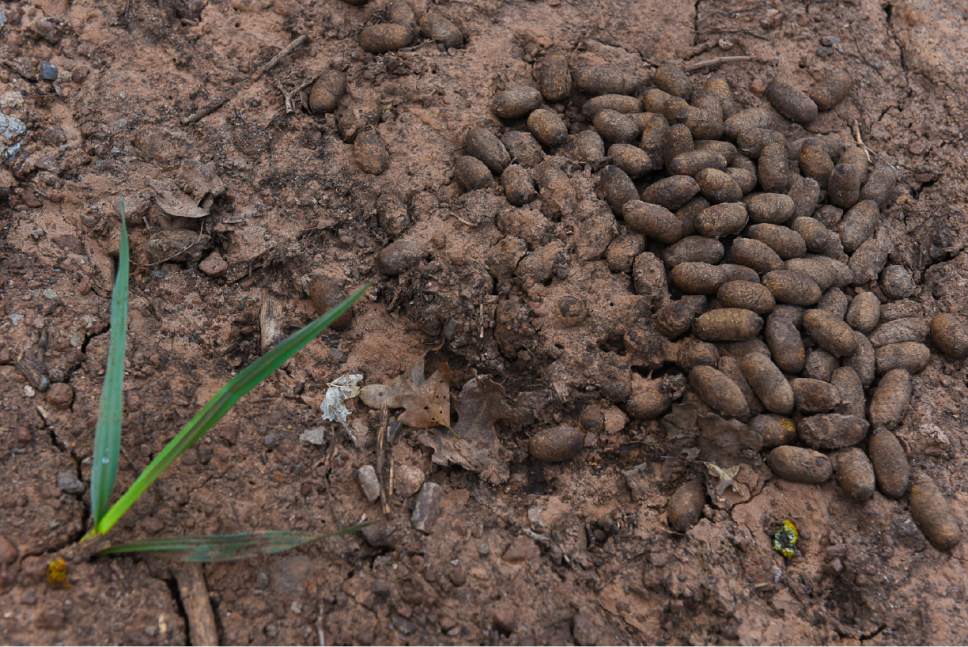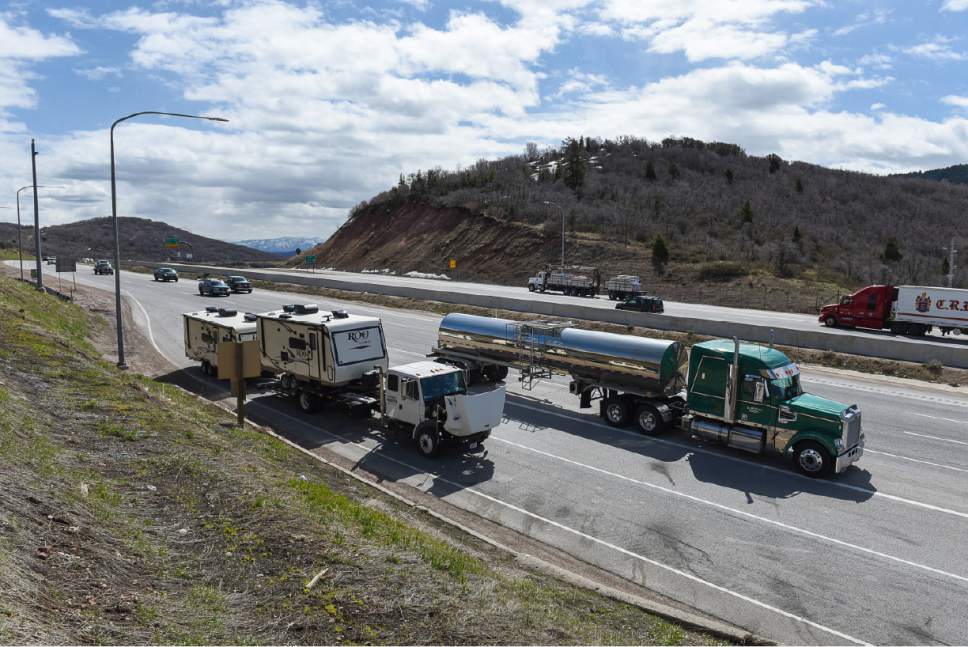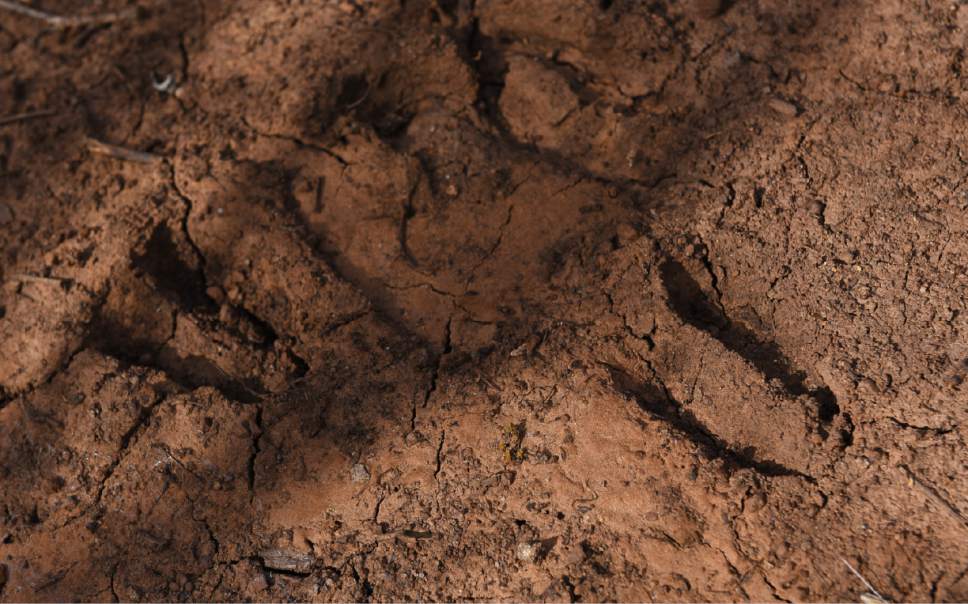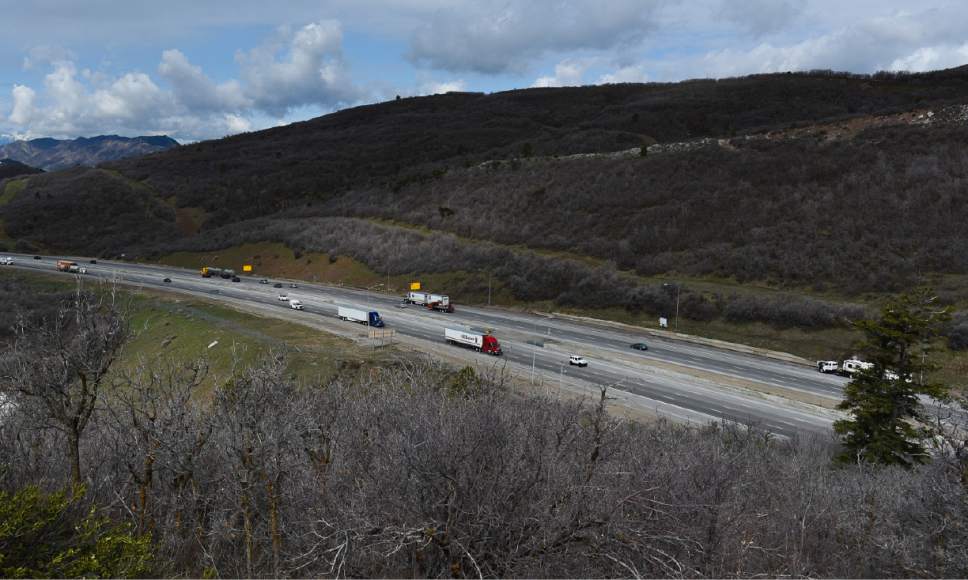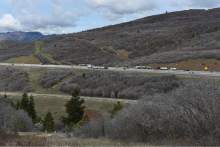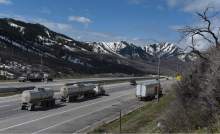This is an archived article that was published on sltrib.com in 2017, and information in the article may be outdated. It is provided only for personal research purposes and may not be reprinted.
Interstate 80 near Parleys Summit has long been among the deadliest stretches of road in Utah for big game.
Between Lambs Canyon and Kimball Junction — a 13-mile stretch — cars killed 122 mule deer, 13 moose, four elk and three mountain lions in the past two years, according to the Utah Department of Transportation (UDOT). A handful of drivers suffered minor injuries dating back to 2008.
UDOT says it has a solution: an overpass built just for wildlife.
Officials recently announced the $5 million project at a packed public meeting at Jeremy Ranch Elementary School. For years, residents in the Jeremy Ranch area have pushed for better fencing and other measures to reduce wildlife collisions.
The bridge is one of several improvements planned for I-80 near Parleys Summit. Additional wildlife fencing is to be erected on both sides of the freeway. Also planned is a semitrailer lane on the westbound climb to the summit and fresh asphalt from Lambs Canyon to Jeremy Ranch.
Concerns over animal deaths on the freeway — and the danger posed to drivers — led to the 2015 formation of Park City nonprofit Save People, Save Wildlife. The group's first big success was in raising about $50,000 for a mile-long wildlife fence between I-80 and Jeremy Ranch last year, organization President Ralph Hottinger said.
UDOT matched the group's funds and put up the fence in the fall. The agency had previously installed several miles of the 7-foot-6-inch fence along the freeway on the west side of the summit.
The fences have worked — to an extent. The number of crashes in Parleys Canyon dropped after the barriers were installed. But officials realized animals often traveled along the fences until they terminated, effectively "pushing collisions farther down the road," said Matt Howard, a Utah Division of Wildlife Resources biologist.
With several more miles of fencing to plug gaps, officials hope they can instead funnel animals over the new bridge.
While the design hasn't been finalized, the bridge is expected to be 45 feet wide and 345 feet long, crossing the freeway just west of the Parleys Summit interchange. Officials still are considering whether it should be filled with vegetation to blend in with the environment or remain barren to allow wildlife to easily see the other side.
John Montoya, a UDOT project manager, said the location made sense for several reasons. Wildlife collisions were concentrated near the summit, a popular crossing point, he said, and a watershed area on both sides of the proposed bridge is protected from development. The bridge also will be placed on a cut slope on either side of the freeway.
Officials considered an underpass. But they realized moose and elk would be unlikely to pass through a dark 400-foot-long tunnel, Montoya said.
"The biggest thing that matters to us is to build a bridge that works, that the larger animals will use," he said.
Wildlife overpasses built elsewhere have been successful. On the Trans-Canada Highway in Banff National Park, wildlife collisions decreased 80 percent after overpasses and other mitigation measures were installed. Several new overpasses in Colorado also had immediate mortality reductions.
The I-80 project will be the first wildlife overpass of its size in Utah — and the first built by UDOT specifically for wildlife, officials said. Howard said the DWR plans to place cameras on both sides, to study how many animals use it.
The biologist said he expects that in the first few years, migrating wildlife will continue to congregate along fences near the freeway, attempting to cross in their normal manner.
But the animals will adapt and start traveling directly to the bridge, he said.
Construction on the $5 million bridge and on $17 million worth of other projects — all federally funded — is scheduled to begin in early 2018.
Hottinger said the bridge and additional fencing are exactly what Save People, Save Wildlife pushes for. The group formed after two moose calves were killed on an on-ramp, which captured the community's attention, he said.
And there have been other high-profile wildlife incidents on the freeway. Earlier this year, I-80 closed in Parleys Canyon for nearly an hour after 12 elk wandered into the median. In 2001, an effort to move moose away from the freeway with a helicopter led to the chopper crashing into Mountain Dell Reservoir; all three men on board died.
Save People, Save Wildlife has kept its own tally of dead wildlife in the area, Hottinger said, and has kept pressure on state officials to build additional fencing and the bridge.
"I'm really pleased with UDOT," Hottinger said. "They've stepped forward. We see UDOT as our partners."
lramseth@sltrib.com
Twitter: @lramseth


